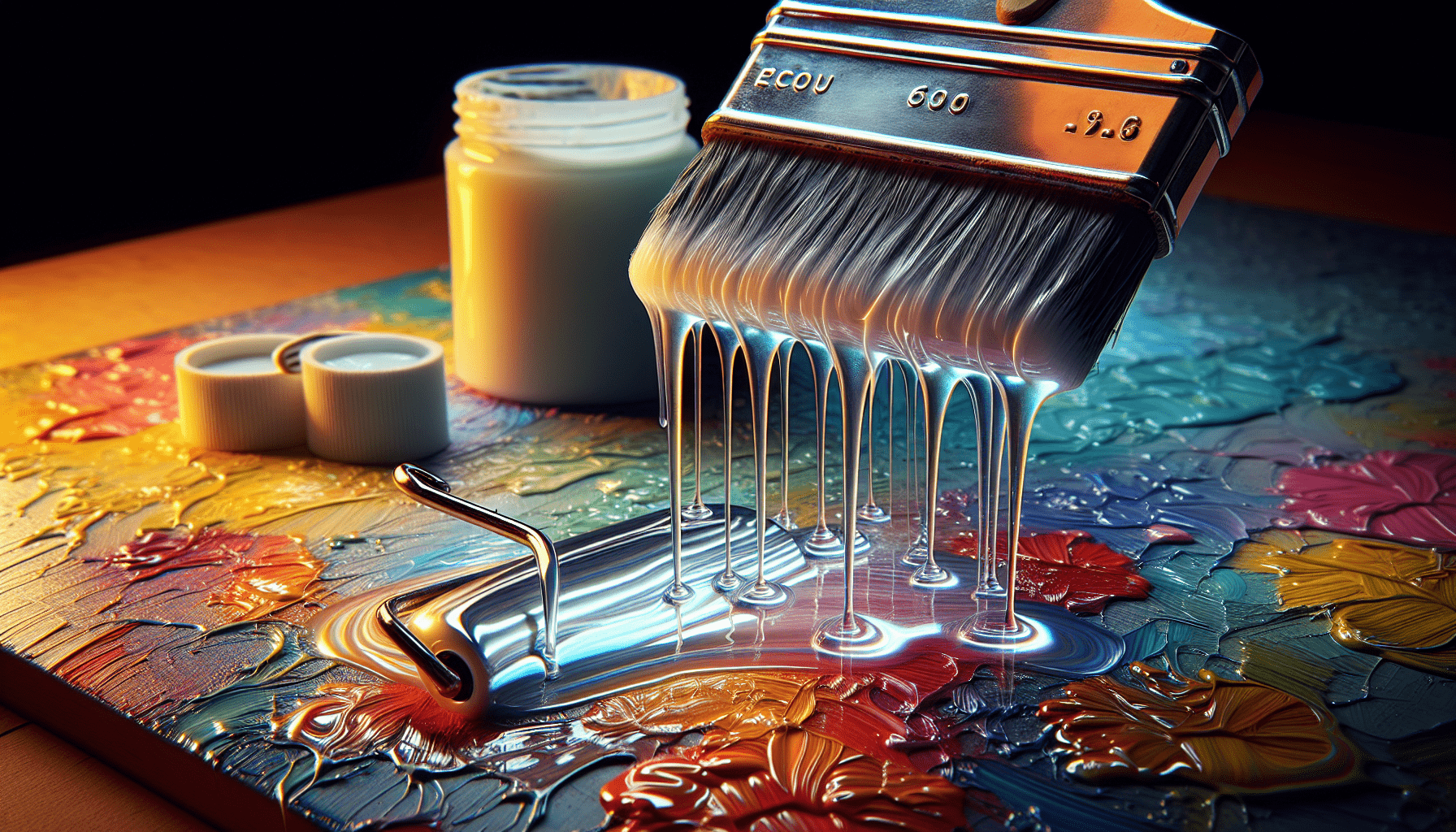Epoxy painted floors are a popular choice for many homeowners due to their durability and high-gloss finish. However, keeping these floors clean and looking their best can sometimes be a challenge. In this insightful article, you will discover effective techniques and professional tips on how to properly clean and maintain epoxy painted floors. By following these recommendations, you will be able to preserve the pristine appearance of your floors while ensuring their long-lasting beauty.
Gather the necessary cleaning supplies
To properly clean your epoxy painted floors, it is essential to gather the necessary cleaning supplies. These supplies include a soft-bristle broom or dust mop, a microfiber mop or soft cloth, a pH-neutral floor cleaner, a bucket, and warm water. Each of these items plays a crucial role in ensuring the cleanliness and longevity of your epoxy painted floors.
A soft-bristle broom or dust mop is the first tool you will need to gather. This will help you sweep away loose dirt and debris from the floor surface before proceeding with the cleaning process. The soft bristles or mop head will prevent any scratches or damage to the epoxy surface.
Next, you will need a microfiber mop or soft cloth. Microfiber materials are highly effective in picking up dirt and grime without leaving streaks or residue behind. A soft cloth can be used if you prefer to clean the floor by hand in smaller areas.
A pH-neutral floor cleaner is a crucial component of the cleaning process. This type of cleaner is specifically formulated to be gentle on epoxy surfaces while still effectively removing dirt and stains. Avoid using harsh chemicals or cleaners that contain ammonia or bleach, as these can cause damage to the epoxy paint.
A bucket is needed to mix the cleaning solution and to hold the warm water required for the cleaning process. Choose a bucket with a capacity that allows you to easily dip your mop or cloth into the solution without oversaturation.
Lastly, warm water is necessary to create the cleaning solution and rinse the floor. Warm water is effective in breaking down dirt and grime, making the cleaning process more efficient.
Clear the floor area
Before starting the cleaning process, it is important to clear the floor area of all furniture and objects. This will allow you to have unrestricted access to the entire floor surface and ensure that no areas are missed during the cleaning process.
Start by removing all furniture and objects from the floor. Place them in a safe and designated area away from the cleaning process. This will prevent any damage to the items or interference with the cleaning process.
Once the floor is clear, use a soft-bristle broom or dust mop to sweep or vacuum the floor. This will remove any loose dirt, dust, or debris that may be present. Pay special attention to corners and edges, as these areas tend to accumulate more dirt and debris.
Sweeping or vacuuming the floor before mopping ensures that the cleaning process is more effective. By removing loose dirt and debris, you prevent them from being spread around or becoming trapped in the cleaning solution.

Prepare the cleaning solution
After clearing the floor area, it is time to prepare the cleaning solution. This solution will effectively remove dirt, stains, and grime from the epoxy surface, leaving it clean and polished.
Start by filling a bucket with warm water. The warm water will help in breaking down dirt and grime, making it easier to clean the floor.
Add a small amount of pH-neutral floor cleaner to the bucket of warm water. Follow the manufacturer’s instructions for the recommended amount of cleaner to use. Using too much cleaner can leave a residue on the floor, while using too little may not effectively clean the surface.
With the cleaner added to the warm water, gently mix the solution. Avoid stirring too vigorously, as this can create excess foam or bubbles that may be difficult to remove from the floor surface.
Mop the floor
Now that the cleaning solution is prepared, it is time to mop the floor. The mop and cleaning solution will work together to remove dirt, stains, and grime from the epoxy surface.
Dip the microfiber mop or soft cloth into the cleaning solution, ensuring that it is thoroughly saturated. It is important to wring out excess water from the mop or cloth to avoid oversaturation of the floor. Too much water can lead to extended drying times and potential damage to the epoxy surface.
Starting from one corner of the floor, begin mopping and work your way across the entire area. Use gentle, circular motions as you mop to effectively clean the epoxy surface. This motion helps to loosen dirt and grime while minimizing the risk of scratching the paint.
Pay extra attention to any stained or dirty areas on the floor. These areas may require additional passes with the mop or a gentle scrub using a soft-bristle brush or cloth. Ensure that you cover the entire floor evenly and thoroughly to achieve a clean and polished result.

Spot clean stubborn stains
While mopping will effectively clean the majority of dirt and stains from the epoxy painted floor, there may be some stubborn stains that require additional attention. In such cases, spot cleaning can help to eliminate these stubborn stains and restore the floor’s appearance.
For tougher stains, start by applying a small amount of undiluted pH-neutral cleaner directly to the stain. Allow the cleaner to sit on the stain for a few minutes to break down the dirt or grime.
Gently scrub the stain using a soft-bristle brush or cloth. Avoid using abrasive tools or brushes with stiff bristles, as they can cause damage to the epoxy surface. Use circular motions while scrubbing to effectively lift the stain without scratching the floor.
After scrubbing the stain, rinse the area with clean water. This will remove any remaining cleaner and residue. Ensure that you thoroughly dry the spot with a clean cloth to prevent any water spots or streaks from forming.
Rinse the floor
After mopping and spot cleaning, it is important to rinse the floor to remove any cleaning solution residues. This step helps to maintain the integrity of the epoxy surface and prevent any build-up of residue that could dull the floor’s appearance.
Fill a clean bucket with warm water for the rinsing process. Use a clean mop or cloth to rinse the floor with plain water. Make sure to cover the entire floor, paying extra attention to areas that may have had more cleaning solution applied.
To ensure that all cleaning solution residues are removed, you may need to rinse the floor multiple times. If necessary, change the water in the bucket to avoid reintroducing any residues from the cleaning process.
Dry the floor
After rinsing the floor, it is important to dry it thoroughly. Excess water left on the floor can lead to water spots, streaks, or even damage to the epoxy surface.
To dry the floor, you can use a dry microfiber cloth to wipe away any remaining moisture. Ensure that you go over the entire floor, paying extra attention to any areas that may have collected more water during the rinsing process.
Alternatively, you can allow the floor to air dry naturally. This method may take longer, but it allows for a completely dry surface without the risk of introducing any water spots or streaks.
Before allowing foot traffic or placing furniture back on the floor, ensure that it is completely dry. This will help to maintain the cleanliness and appearance of the epoxy painted floor.
Maintain regular cleaning routine
To keep your epoxy painted floors looking their best, it is important to establish and maintain a regular cleaning routine. This routine will help to prevent the build-up of dirt, grime, and stains, ensuring that your floors stay clean and polished.
Sweep or dust mop the floor daily to remove loose dirt and debris. This daily maintenance step will prevent dirt from being ground into the epoxy surface and extend the time between deep cleaning sessions.
Clean spills or stains promptly to prevent staining. Epoxy painted floors are generally resistant to staining, but it is still important to address spills or stains as soon as they occur. This will help to minimize any potential damage or discoloration.
Periodically deep clean the floor using the above steps. While daily maintenance is essential, deep cleaning at regular intervals is necessary to remove any accumulated dirt, grime, or stains that may not have been addressed during daily cleaning.
Avoid using abrasive cleaners or tools
When cleaning your epoxy painted floors, it is important to avoid using abrasive cleaners or tools that can damage the epoxy surface. These cleaners and tools can scratch or dull the epoxy paint, compromising the appearance and longevity of your floors.
Firstly, avoid using harsh chemicals, bleach, or ammonia-based cleaners. These cleaners can be too harsh for the epoxy surface and may cause discoloration or damage over time. Stick to pH-neutral floor cleaners that are specifically formulated for use on epoxy surfaces.
Secondly, do not use abrasive tools like steel wool or scrub brushes with stiff bristles. These tools can scratch the epoxy paint and create unsightly marks or damage. Instead, opt for soft-bristle brushes or microfiber cloths that are gentle yet effective in cleaning the floor.
Consider additional protective measures
To further protect your epoxy painted floors and maintain their appearance, consider implementing additional protective measures. These measures can help to minimize wear, scratches, and damage, ensuring that your floors stay in top condition for longer.
Consider using floor mats or rugs in high-traffic areas. Placing mats or rugs at entrances, in hallways, or other areas where foot traffic is heavy can prevent wear and tear on the epoxy surface. These protective coverings act as a barrier between the floor and shoes, reducing the risk of scratches or damage.
Place felt pads under furniture legs to avoid scratching the epoxy. When moving furniture or placing it back on the floor, ensure that felt pads are attached to the legs. This will prevent the furniture from scratching the epoxy surface and keep it looking pristine.
Lastly, avoid dragging heavy objects across the floor. Heavy objects can cause significant damage to the epoxy paint, including scratches, gouges, or even peeling. If you need to move heavy objects, use furniture sliders or ask for assistance to prevent any accidents.
By implementing these additional protective measures, you can extend the life and beauty of your epoxy painted floors, ensuring that they continue to impress for years to come.



